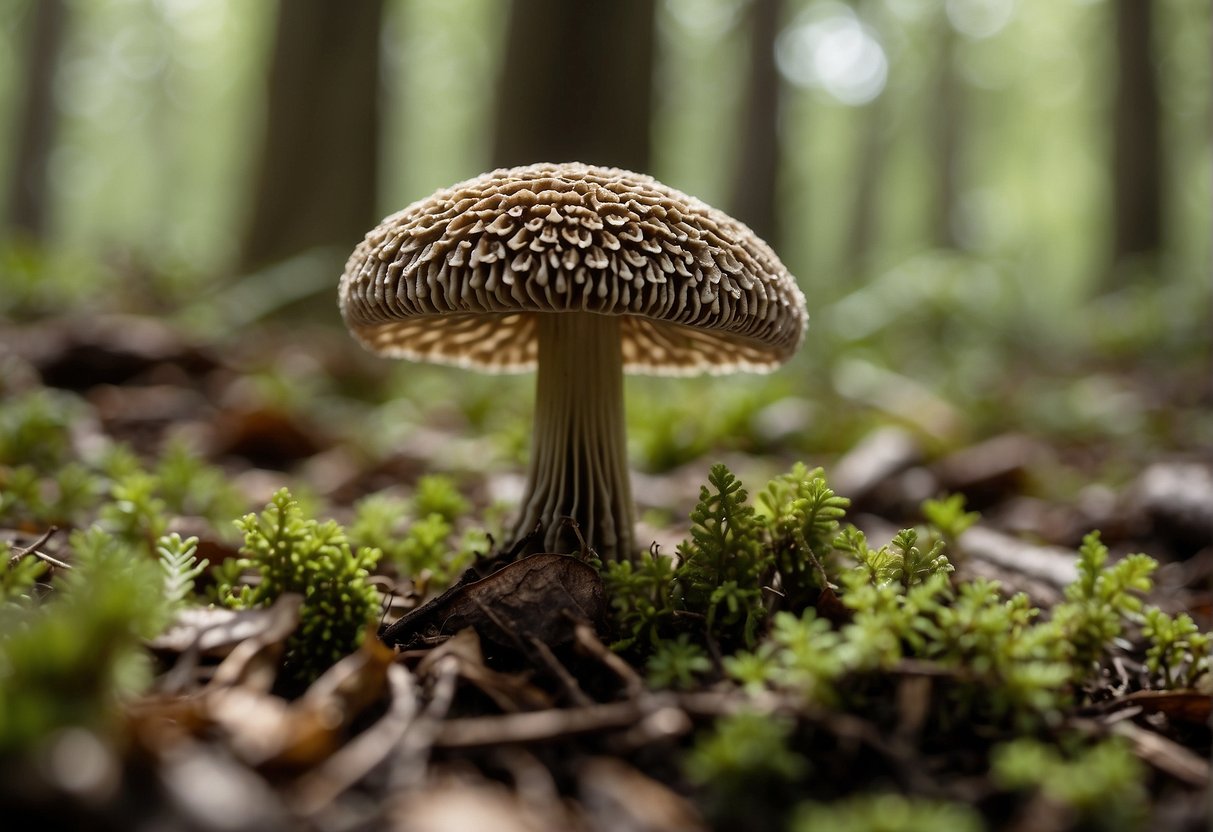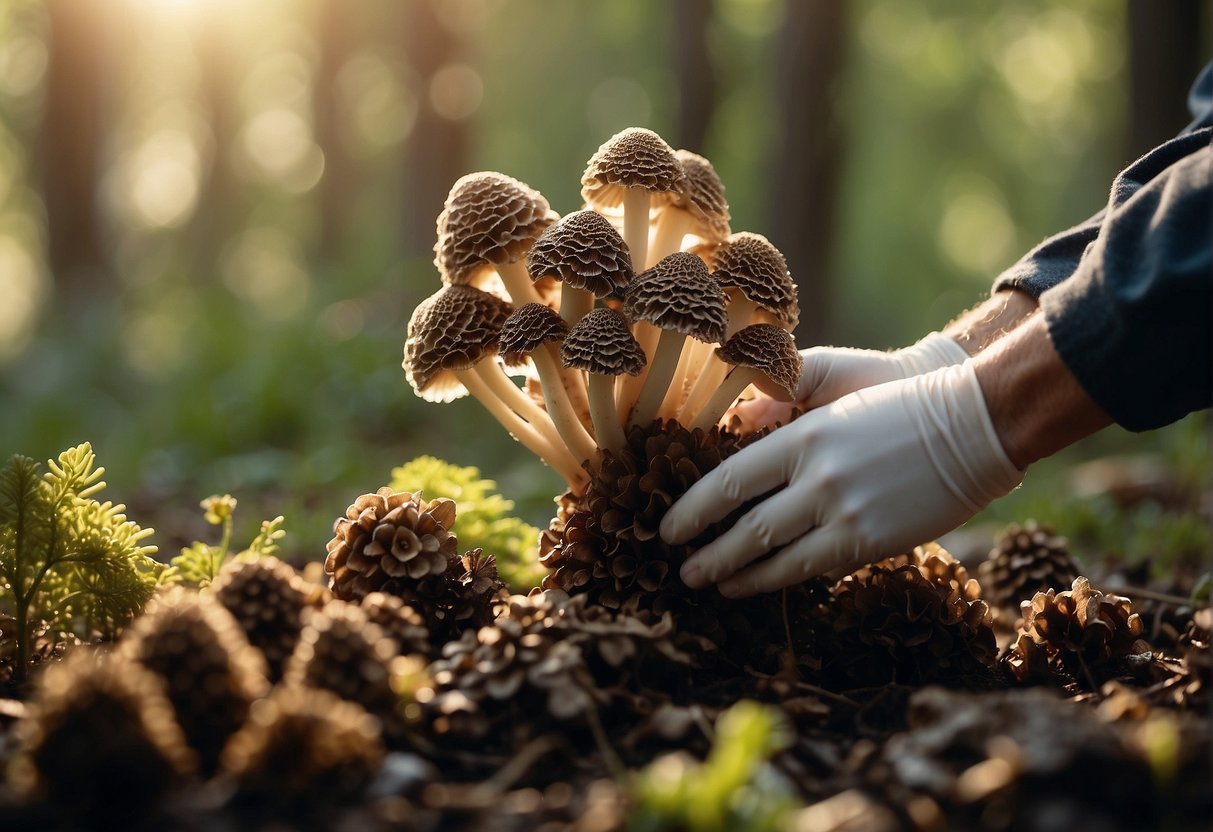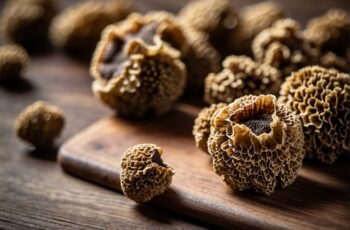Growing morel mushrooms can be a rewarding endeavor that connects you with the cycles of nature in a truly hands-on way. Morels, with their distinctive honeycomb appearance, are one of the most sought-after and gastronomically esteemed wild mushrooms. Unlike many other varieties of mushrooms, morels require specific conditions to flourish, and their unique growing requirements make them both a challenge and a delight for cultivators. By understanding their lifecycle and preferred environment, you can try your hand at cultivating these elusive fungi right in your own backyard.

Caring for morels involves mimicking their natural habitat as closely as possible, which can truly put your green thumb to the test. They thrive in cool, moist conditions and are typically found in woodland areas, often emerging in the spring following a fire. Whether gathered from the wild or cultivated at home, morels are versatile in culinary applications. If you’ve a passion for outdoor gardening and a taste for gourmet mushrooms, growing morels can gratify both your avocation for cultivation and your palate. The process calls for patience and attention to detail, but the reward of harvesting your own morels is well worth the effort.
Key Takeaways
- Cultivating morel mushrooms provides a gratifying connection to nature.
- Understanding morel habitats and life cycles is crucial for successful cultivation.
- Morel mushrooms demand patience but offer rich culinary rewards upon harvesting.
Understanding Morel Mushrooms
In delving into the world of morel mushrooms, you will discover the fascinating biology of these prized fungi and the specific environmental conditions they require to thrive.
Biology and Identification
Morels (genus Morchella) are a type of edible mushroom favored by foragers and culinary enthusiasts. They are distinct from other mushrooms with their honeycomb-like appearance, featuring a network of ridges and pits. These fungi are part of the Ascomycota division, meaning they release spores from small, sac-like structures called asci. Morels are often hunted during their fruiting period in spring.
Characteristics to aid in identification of true morels:
- Cap: Elongated or conical, with a spongy appearance.
- Color: Typically ranges from yellow to dark brown.
- Stem: White to pale, thick, and hollow when sliced longitudinally.
It’s crucial to distinguish true morels from their toxic lookalikes, such as Gyromitra species, often referred to as false morels. Consuming false morels can be dangerous as they contain the toxin gyromitrin, which is harmful to your health.
Habitat and Environmental Conditions
Morels find their home within deciduous and coniferous forest environments. They form symbiotic relationships with trees, making their habitat selection crucial for their development. Searching for morels in areas where trees like elms, ashes, and poplars have recently died could increase your chances of success, due to the nutrients released into the soil by decaying wood, which are favorable for morel growth.
Key environmental conditions for morel growth:
- Temperature: Soil temperature around 45°F – 50°F (7°C – 10°C).
- Soil: Rich, loamy, and well-drained with a high organic matter content.
- Moisture: Adequate rainfall or ground moisture.
Understanding the lifecycle of morels is key to successful foraging. They appear in the springtime, particularly after a wet and warm period following a cold winter. Their existence is brief, so taking note of these environmental cues can lead to a fruitful hunt.
When you’re out in the forest, keep in mind that morels are a crucial part of the ecosystem. It’s important to forage responsibly to ensure that these marvelous fungi continue to grace the environment year after year.
Your knowledge of morells’ biology and habitat needs empowers you to not only find these delectable mushrooms but also to contribute to their conservation in the wild.
Cultivation Techniques
To successfully cultivate morel mushrooms, you need to pay close attention to the details of your approach from substrate preparation to careful management of growth conditions. Morels are notoriously finicky, so let’s get into how you can create a conducive environment for them to thrive.
Preparing the Substrate
Your substrate acts as the foundation for your morels and should be a blend of materials like wood chips, peat moss, and sawdust. Add a sprinkle of gypsum to the mix to improve its structure and water retention capabilities.
- Composition: A mix of 40% wood chips, 40% peat moss, and 20% sawdust.
- Additive: Gypsum – 2% of the substrate’s dry weight for optimal pH balance.
Spore Slurry Method
The spore slurry is essentially a mixture of morel spores in water, which aids you in effectively spreading those spores throughout your prepared substrate.
- Collect Spores: Gather mature morels and blend them with water to create your slurry.
- Distribute: Pour the slurry evenly across your morel bed or spawn bed.
Creating Ideal Growth Conditions
Morels require specific conditions: a stable soil temperature between 60-70°F and a high level of moisture.
- Temperature: Maintain your area at 60-70°F – can be monitored with a soil thermometer.
- Moisture: Sandy soil with good drainage to keep moisture balanced.
To encourage the growth of mycelium and eventually the fruiting of the morels, your attention to maintaining a controlled environment, whether it’s an indoor cultivation or an outdoor morel bed, is essential. Remember that patience and precision are your best tools in the challenging task of growing morels.
Care and Maintenance

Proper care and maintenance are crucial to successfully cultivating morel mushrooms. Your focus should be on creating an ideal environment that mimics the natural conditions where morels thrive. Let’s delve into the specifics.
Watering and Moisture Control
Adequate watering and moisture control are key to morel mushroom cultivation. Your morel patch requires consistent moisture, especially during the critical germination and growth phases. Aim to maintain the soil moisture without overwatering to prevent waterlogging. Drainage is equally vital to avoid rot and other moisture-related diseases. Use rainwater or non-chlorinated water to replicate natural conditions as closely as possible.
Nutrient Management
For morels, nutrient management isn’t about heavy fertilization; it’s about maintaining a balanced, nutrient-rich soil. The soil pH should be slightly alkaline to neutral. Consider adding natural amendments like hardwood ash to adjust the pH if necessary. A secret tip is to add a tablespoon of molasses to a gallon of water as a food source to kickstart the mycelium growth, increasing your chances of a fruitful morel crop.
Temperature and Light Requirements
Pay attention to your morel’s temperature and light requirements. These mushrooms prefer a controlled environment with a soil temperature ranging from 45°F to 60°F (7°C to 15°C). While morels don’t require much light, a shaded area with dappled sunlight can provide the right light conditions to mimic their natural woodland habitat. Additionally, air temperatures should fluctuate between 50°F and 70°F (10°C and 21°C) for optimal growth along with high humidity levels of 80% to 90%, creating that moist springtime ambiance morels are known for.
Harvesting and Utilization
When it comes to harvesting morel mushrooms, precision and care are key to maintaining the delicate flavor and integrity of the fruiting bodies. Proper post-harvest handling ensures that you can enjoy their unique nutty and meaty flavors in many gourmet dishes.
Harvesting Techniques
You want to harvest morels at just the right time when they are mature but before they begin to deteriorate. Gently twist and pull the mushrooms from the soil or substrate to avoid damaging their structure. Some foragers also advocate for using a sharp knife to cut the stem just above the ground, which can help preserve the mycelium underground for future growth.
- Use a mesh bag: This allows spores to disperse as you continue to harvest, potentially seeding future harvests.
- Avoid compacting soil: Be mindful of where you step to avoid damaging the mycelium network.
Post-Harvest Handling
Once you have harvested your morels, there are steps you need to take to prepare them for consumption or storage.
- Inspect and Clean: Carefully inspect each morel and remove any debris. Rinse them quickly under cold water if needed, but don’t soak them, as they are highly absorbent.
- Dry if Necessary: If you’re not using them right away, you can dry the morels on racks or paper towels.
Remember, morels have a high water content, so they will need to be either cooked or preserved shortly after harvesting to avoid spoilage. Proper handling is also crucial in preserving the antioxidants these mushrooms are packed with.
Culinary Applications
The unique flavors of morel mushrooms make them a favorite among chefs and food enthusiasts. The earthy, nutty, and meaty flavors complement various dishes from simple pasta to elaborate sauces.
- Simple Sauté: This method brings out the rich flavor of morels. Sauté them in butter, and maybe add a sprinkle of salt.
- As a Gourmet Component: Elevate your dishes by adding morels to risottos or stews.
- Preparation: Prior to cooking or adding to recipes, ensuring that your morels are properly cleaned and any residual dirt or debris is removed is crucial for the best culinary experience.
Incorporating wood ash or grain slurry into your soil can act as a natural fertilizer, affecting the flavor profile of the morels as they take on the minerals from their environment. However, always make sure that any addition to the growing site is sterile to prevent contamination and promote healthy fruiting bodies.


